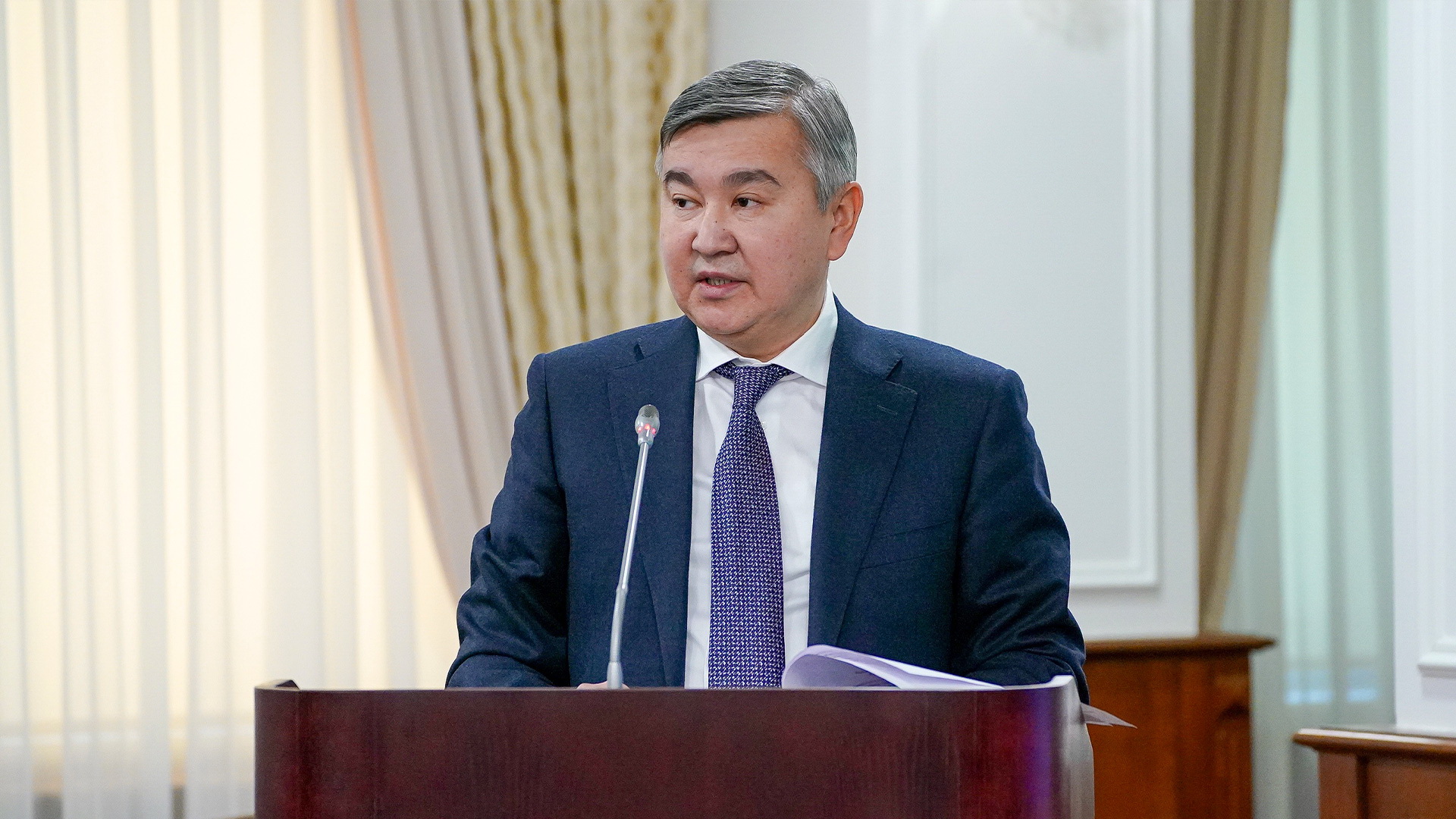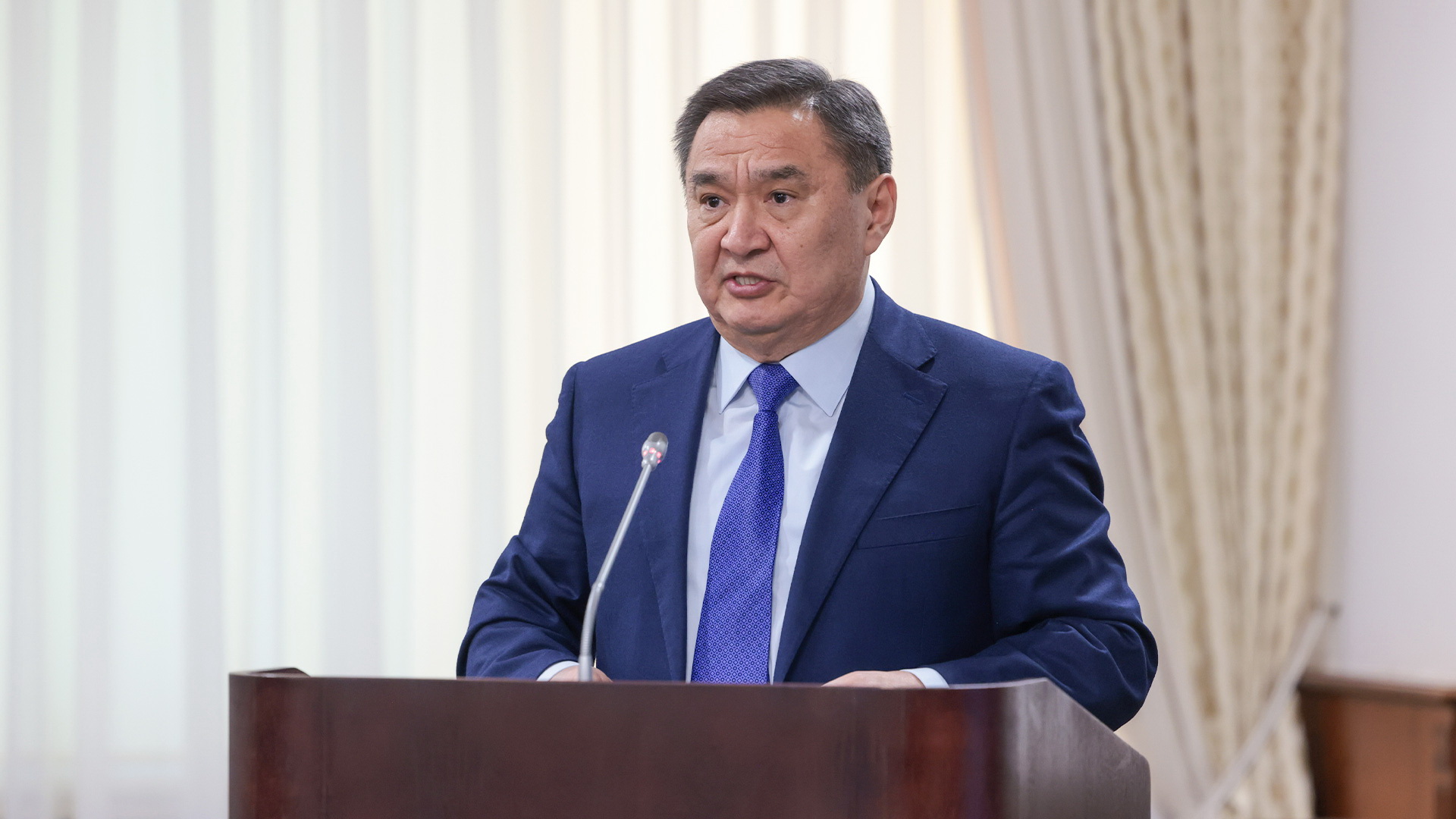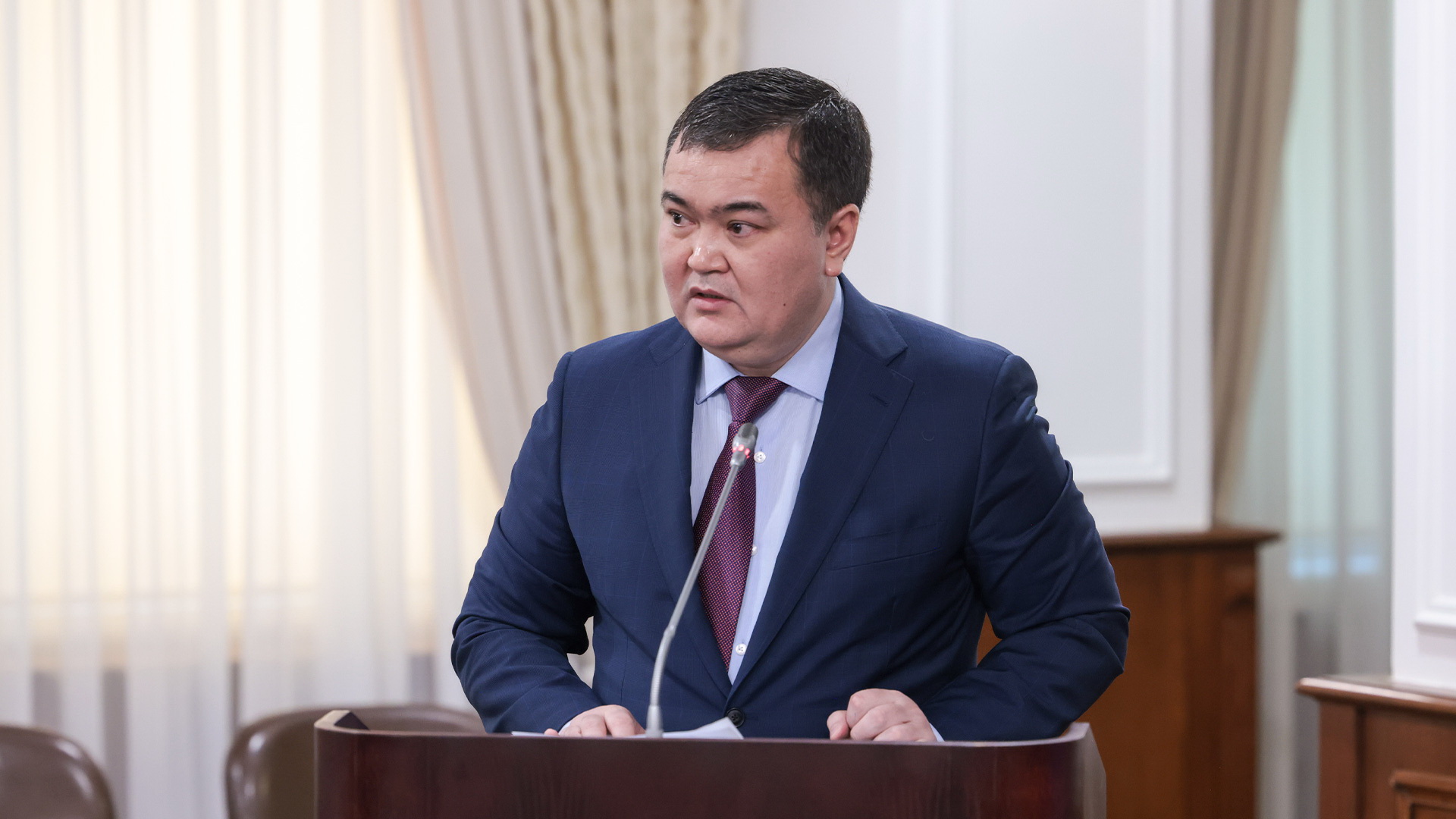27 February 2024, 19:45
 This was reported by Deputy Prime Minister – Minister of National Economy Nurlan Baibazarov at the Government session, where the draft Comprehensive Development Plan of Astana agglomeration for 2024 - 2028 was considered and approved. Akims of Akmola region Marat Akhmetzhanov and Astana city – Zhenis Kasymbek also made reports on the subject.
This was reported by Deputy Prime Minister – Minister of National Economy Nurlan Baibazarov at the Government session, where the draft Comprehensive Development Plan of Astana agglomeration for 2024 - 2028 was considered and approved. Akims of Akmola region Marat Akhmetzhanov and Astana city – Zhenis Kasymbek also made reports on the subject.
The draft Comprehensive Development Plan of Astana agglomeration for 2024 - 2028 years was developed by the Ministry of National Economy together with the akimats of Astana and Akmola region. Recall that the territory of Astana agglomeration includes the capital (as the core of the agglomeration), 46 settlements of three districts of Akmola region (Arshalynsky, Tselinogradsky, Shortanda) and the city of Kosshy. Over 10 years, the population of Astana has increased by 46%, and according to forecasts, by 2035 the total number will be 2.3 million people. At the same time, daily pendulum migration from the settlements of the agglomeration to the capital reaches more than 200,000 people and 30,000 cars.
"There are a number of problems in the capital, leading to increased loads on all types of infrastructure, sprawl of the city outskirts, lack of a convenient transport system and deficit of social facilities. To address these issues, the Comprehensive Plan provides for systemic measures. In general, the implementation of 329 measures totalling 1.13 trillion tenge is envisaged. They are aimed at the development of urban development, modernisation of social, engineering and transport infrastructure, as well as ensuring environmental sustainability, safety and prevention of emergencies," Baibazarov said.
According to the Deputy Prime Minister, within the framework of territorial development of the agglomeration, a unified urban planning policy will be developed, which will allow synchronising the development plans of the capital and Akmola region. Also in this direction it is planned to establish administrative boundaries of settlements. It is expected that this will have a positive effect on the development of land relations in the suburban zone. The Comprehensive Plan also provides for the creation of eco-towns with a total area of more than 940 hectares. On their territory residential houses with premises for small businesses will be built.
To provide the population with social infrastructure facilities, a school for 1,200 places, a kindergarten for 280 places and a multi-profile hospital for 350 beds will be built in Koshy. In the capital, it is planned to build a mining and technical college for 900 students and a children's rehabilitation centre using investors' own funds. In rural areas there will be 9 cultural houses, three leisure centres, two cultural and entertainment complexes and a primary health care centre for 50 visits.
In addition, measures are envisaged for the construction of 6 logistics complexes, a service centre for electric locomotives and subsidies for regular suburban routes. More than 400 km of motorways will also be repaired, 300 km of roads and 4 bridges in settlements will be built. Construction and reconstruction of 70 kilometres of sewerage systems, 500 kilometres of water supply and sewage networks, 800 kilometres of power transmission lines, 3 boiler houses, 30 kilometres of heating and 1,100 kilometres of gas pipelines are planned.
"To develop the food belt and attract investment, 25 food production facilities and 12 industrial goods production facilities will be built. It is also planned to create an industrial zone with a total area of 300 hectares in Arshalyn district. Measures to ensure security and prevent emergency situations are also envisaged. By the end of 2028, 7 fire depots will be built and a system of notification of the population with the introduction of siren-speech device will be created," the Deputy Prime Minister said.
It is also envisaged to purchase 5 units of equipment for sorting solid waste with a total capacity of 40 thousand tonnes per year. Measures will be taken to expand and dredge the Esil River in Zhibek Zholy settlement and to create a reforestation nursery in Bozaigyr village.
"As a result of the implementation of the Comprehensive Plan by 2029 it is planned to create more than 3 thousand permanent and temporary jobs, provide medical care for more than 70 thousand people. It is expected to increase the output of manufacturing industry up to 120% and increase the share of roads in good and satisfactory condition from 55 to 70%," Baibazarov said.
 Akim of Akmola region Marat Akhmetzhanov noted that today the metropolitan area is not provided with proper firefighting infrastructure. The reason is a sharp increase in the number of actually living population. Now fire engines from the nearest settlements and the capital are attracted for extinguishing. At the same time, the distance between them sometimes reaches 50 kilometres.
Akim of Akmola region Marat Akhmetzhanov noted that today the metropolitan area is not provided with proper firefighting infrastructure. The reason is a sharp increase in the number of actually living population. Now fire engines from the nearest settlements and the capital are attracted for extinguishing. At the same time, the distance between them sometimes reaches 50 kilometres.
"According to the norms, in settlements with a population of 5,000 to 20,000 people there should be one fire station for 6 vehicles. But these norms, unfortunately, are not fulfilled. To solve this problem, the Comprehensive Plan provides for the construction of 7 depots. The construction of the depot in the town of Kosshy has started, 2 projects for the construction of facilities in the villages of Zhibek Zholy and Talapker have been developed, applications have been sent to the sectoral department. Three projects are also being developed in Akmol, Karaotkel and Koyandy villages. Next year we will start designing a fire station in Bozaigyr village," the akim said.
Marat Akhmetzhanov also focused on population growth in the Astana agglomeration. According to him, for the last 10 years the number has grown on average by 72%, and this is only official statistics. In reality, as noted by the akim, the number in the villages of the agglomeration has grown on average by 6 times. For example, in Zhibek Zholy in 2014 there were 4,675 residents, now officially there are 10,622 people, and in fact - about 30 thousand people. In Talapker today there are 30 thousand people, while in 2014 there were 6,800. The population of Kossha has also grown 5 times.
Akim said that suburban settlements should become a counter-regulator of the agglomeration zone. But today there is a problem of incomparability between the dynamics of population growth and construction rates. At the same time, the local budget cannot always ensure timely financing of costly projects. As an example, M. Akhmetzhanov cited the situation with the construction of water supply networks in Zhibek Zholy village of Arshaly district.
"According to the project it was planned 34 kilometres of networks, after adjustments their length increased to 93 kilometres. More changes are being considered, while the budget does not provide such funds. Taking into account the special status of the agglomeration zone, within the framework of the new draft Budget Code we propose to provide norms for financing of the adjusted projects with increase of the estimated cost at the expense of the republican budget," Akhmetzhanov said.
The Comprehensive Plan includes the issues of minimising uncontrolled migration flows and reducing the gap of social and engineering infrastructure between Astana and metropolitan settlements. In this regard, 245 activities are planned in Akmola region. Particular attention is paid to the development of communal and energy infrastructure. Akim stressed that due to construction and reconstruction of networks, the villages included in the agglomeration will be 100% supplied with water. The issue of deficit of capacities for production and transmission of electricity, heat and gas will also be solved. It is planned to build new boiler houses in the town of Koshy and the village of Akmol. As part of strengthening the transport and logistics potential, road construction and repair projects are planned.
Emphasis is also placed on the social sphere. Thus, a school and a kindergarten will be built in Koshy to prevent three-shift education and reduce the waiting list for pre-school organisations, and a multi-profile hospital will be built to improve the quality of medical services.
"Already now the town of Kosshi is a point of attraction for private investments. Large social and cultural facilities have been built here over the past two years. In the future, Kosshy will become a "magnet" for metropolitan villages. The implementation of projects at the expense of private investment will create more than 2.5 thousand new jobs. In general, the adoption of the Comprehensive Plan will have a positive effect in reducing the gap between Astana and settlements of the agglomeration, as well as reduce pendulum migration to the capital," Akhmetzhanov emphasised.
 At the Government session the akim of Astana city. Zhenis Kasymbek reported on how the route network of public transport will be developed. He noted that in the development of a new general plan of the capital, adopted in January this year, the population growth of both Astana and settlements of the agglomeration was taken into account. To regulate migration flows and reduce the load on the road network, the general plan provides for the placement of transport and transfer hubs at all radial entrances to the capital.
At the Government session the akim of Astana city. Zhenis Kasymbek reported on how the route network of public transport will be developed. He noted that in the development of a new general plan of the capital, adopted in January this year, the population growth of both Astana and settlements of the agglomeration was taken into account. To regulate migration flows and reduce the load on the road network, the general plan provides for the placement of transport and transfer hubs at all radial entrances to the capital.
"Currently, the suburban area of the capital is served by 26 routes. Last year 400 buses were additionally launched. If last year 900 units of public transport went out on the routes in the mornings, now their number has increased to 1,300. This year it is expected to replenish the fleet by another 300 buses and to open about 15-20 new routes. This will allow us to increase the number of suburban routes, extend them within settlements and provide additional mobility for residents of the agglomeration," Kassymbek said.
Akimats of Astana and Akmola region today take joint measures on synchronised development of districts included in the agglomeration. Since the capital is the largest nearby market for agro-industrial enterprises of the region, the implementation of 63 major projects is envisaged here. These include the construction of a greenhouse complex, two vegetable storage facilities, production complexes, three large warehousing and logistics centres. 7 projects are already at the commissioning stage.
The Akimats have also reached an agreement on priority allocation of land plots for investors working for the capital market. Negotiations with an investor on construction of a modern waste incineration plant with additional generation of heat and electricity are at the stage of completion. It is noted that the plant is designed to process 1500 tonnes of MSW per day, including taking into account the collection and removal of municipal waste from settlements that make up the agglomeration.
#Construction #Government session #Infrastructural development"More than 10 thousand schoolchildren and college students of the neighbouring settlements study in the capital. To solve the issues of deficit of pupil places in the residential areas bordering the region, this year it is planned to complete the construction of 3 schools, 2 of them are comfortable (for 2000 places each). Also statistics shows that more than 17 per cent of beds in city hospitals are occupied by patients from other cities. We see that there is a need for additional health care facilities. That is why the construction of a third multidisciplinary hospital and two perinatal centres is now an urgent issue. Construction of the perinatal centres is planned to start this year. Designing of the third multi-profile hospital is being finalised, it is necessary to start construction in 2025. In general, the implementation of all planned activities will be under constant control," Kassymbek summarised.
Stay updated about the events of the Prime minister and the Government of Kazakhstan - subscribe to the official Telegram channel
Subscribe